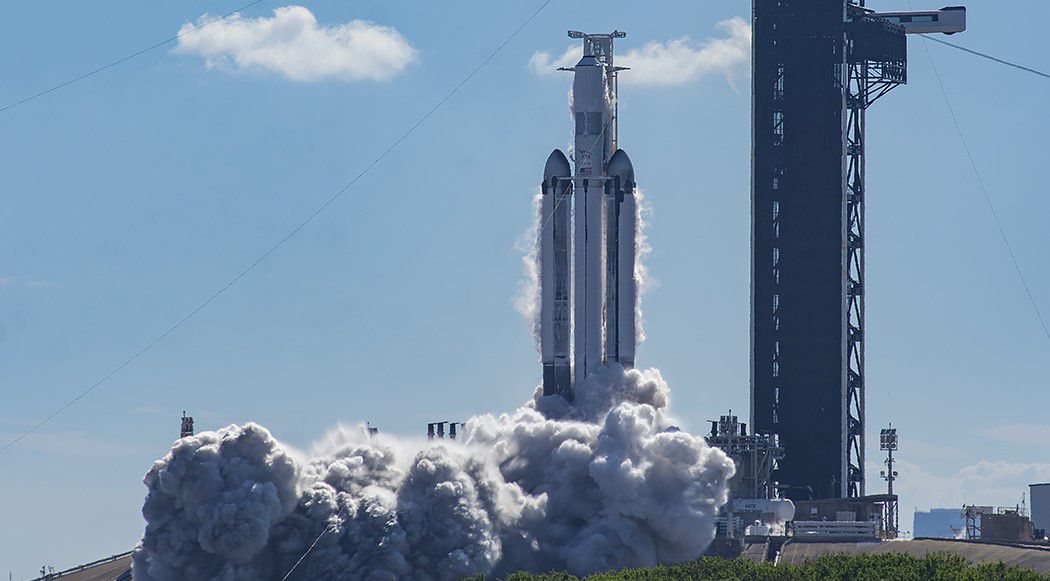

News
SpaceX’s fifth Falcon Heavy launch on track for Sunday liftoff
Update: SpaceX’s fifth Falcon Heavy launch is on track to launch as early as 5:56 pm EST (22:56 UTC), Sunday, January 15th. Tune in below around 5:40 pm EST (22:40 UTC) to watch the potentially spectacular launch live.
If Falcon Heavy does launch shortly after sunset, it could put on a spectacular show, lighting up the twilight skies for hundreds of miles up and down the East Coast.
The fifth Falcon Heavy rolled out of SpaceX’s Kennedy Space Center Pad 39A integration hangar on January 9th and went vertical early on January 10th. 12 hours later, it was loaded with ~1500 tons (~3.3 million lbs) of liquid oxygen and kerosene propellant and ignited for about eight seconds. SpaceX uses static fire tests more liberally than most other launch providers to try to ensure that all systems – propulsion included – are cooperating before liftoff.
The update that's rolling out to the fleet makes full use of the front and rear steering travel to minimize turning circle. In this case a reduction of 1.6 feet just over the air— Wes (@wmorrill3) April 16, 2024
At full throttle, Falcon Heavy Block 5’s 27 Merlin 1D engines – nine per Falcon 9-derived booster – can produce 2326 tons (5.13 million lbf) of thrust at sea level, making it the most powerful privately-developed rocket in history. In terms of performance, Falcon Heavy is the fifth most capable rocket ever built and is second only to NASA’s Space Launch System (SLS) today. While the records of N1, Saturn V, and Energia still stand, all three were retired decades ago.
As is the norm for a rocket with as little experience as Falcon Heavy, SpaceX conducted the static fire test without the USSF-67 payload installed. Like USSF-44, a virtually identical Falcon Heavy launch with similar payloads that launched on November 1st, 2022, SpaceX needs to roll the USSF-67 rocket back to the hangar for fairing installation. During USSF-44, SpaceX took approximately 110 hours to go from static fire to liftoff.
USSF-67’s static fire occurred about 100-104 hours before its scheduled liftoff, meaning that SpaceX only needs to be about 5% more efficient to be ready to launch on Saturday, January 14th. Assuming Falcon Heavy returns to the hangar and rolls back to the pad about as quickly as USSF-44, the odds of a Saturday launch are decent.
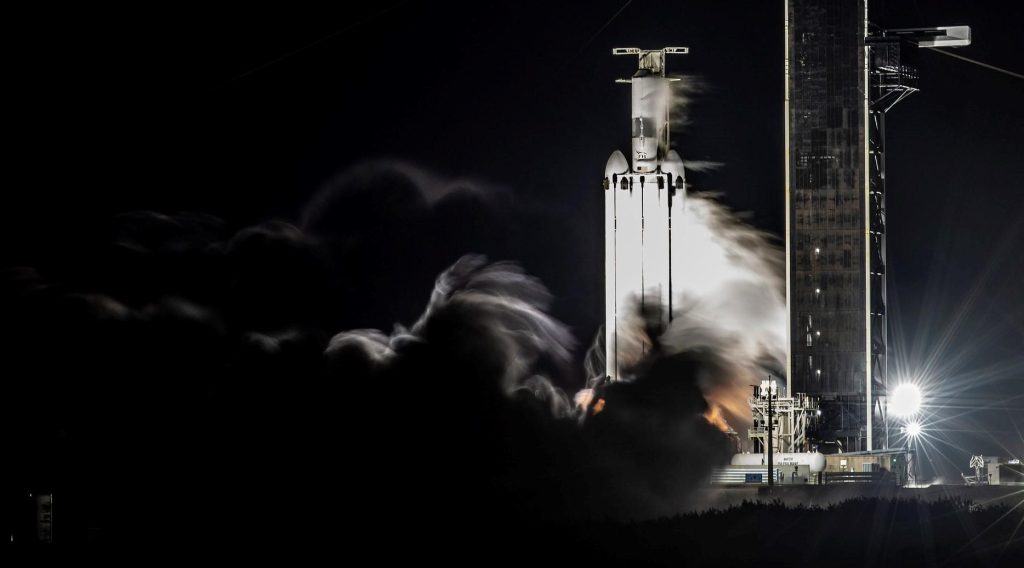
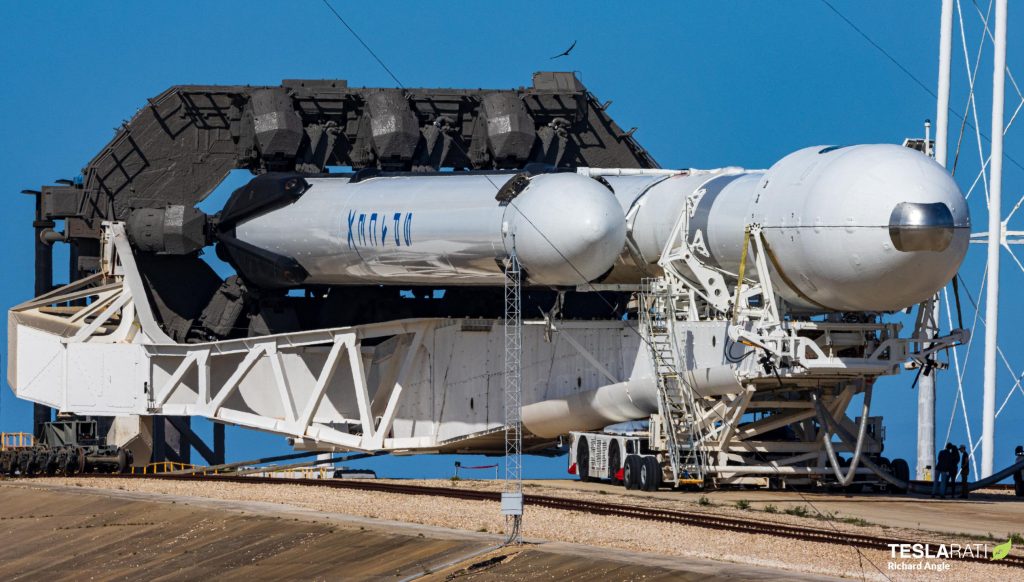
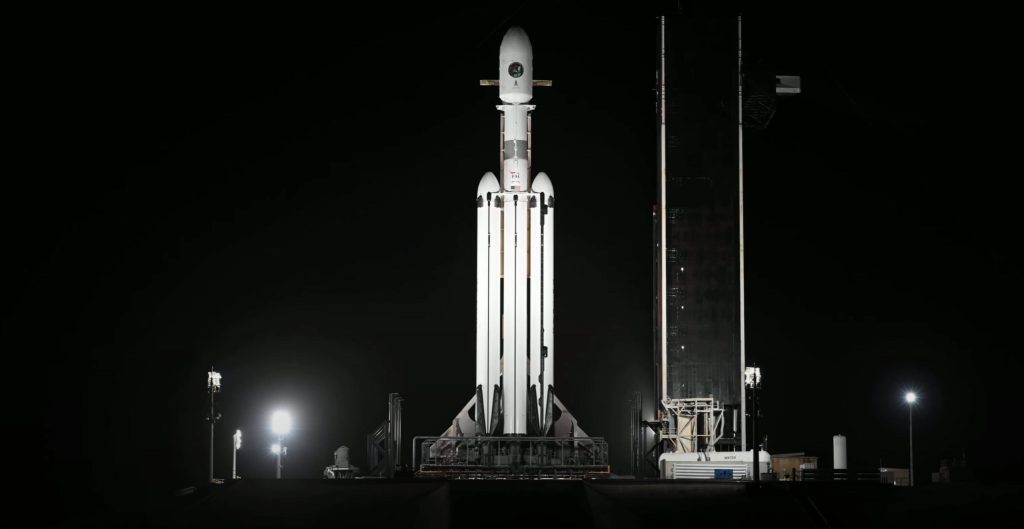
SpaceX’s second direct GEO launch
Like USSF-44, Falcon Heavy will sacrifice one of its three boosters (the center core) to launch USSF-67 directly to a circular geosynchronous orbit ~35,800 kilometers (~22,250 mi) above Earth’s surface. A satellite operating at GSO will never stray from the same region of Earth, making it useful for communications and surveillance. Getting there, however, can be exceptionally difficult.
“To simplify the rocket’s job, most GEO-bound satellites are launched into an elliptical geosynchronous or geostationary transfer orbit (GTO) and use their own propulsion to circularize that ellipse.
On a direct-to-GEO launch, the rocket does almost all of the work. After reaching a parking orbit in Low Earth Orbit (LEO), Falcon Heavy’s upper stage will complete a second burn to reach GTO. Then, while conducting a complex ballet of thermal management and tank pressure maintenance to prevent all of its cryogenic liquid oxygen (LOx) from boiling into gas and its refined kerosene (RP-1) from freezing into an unusable slush, the upper stage must coast ‘uphill’ for around five or six hours.
During that journey from 300 kilometers to 35,800 kilometers, the upper stage must also survive passes through both of Earth’s Van Allen radiation belts. At apogee, Falcon S2 must reignite its Merlin Vacuum engine for a minute or two to reach a circular GSO. Payload deployment follows soon after and could last anywhere from a few minutes to hours. Finally, to be a dutiful space tenant, Falcon’s upper stage must complete at least one more burn to reach a graveyard orbit a few hundred kilometers above GEO.”
Teslarati.com – November 1st, 2023
The USSF-67 payload is mostly a mystery. Like USSF-44, it will carry a Northrop Grumman LDPE (Long Duration Propulsive EELV) with several unspecified rideshare payloads. LPDE is a transfer vehicle capable of deploying small satellites into customized orbits and hosting payloads for months in space.
The US Space Systems Command says [PDF] that “LDPE provides critical data to inform future Space Force programs” and that “the unique experiments and prototype payloads hosted on LDPE-3A [will] advance warfighting capabilities in the areas of on-orbit threat assessment, space hazard detection, and space domain awareness.”
Stay tuned for updates on USSF-67’s launch schedule and SpaceX’s official webcast.
News
These Tesla, X, and xAI engineers were just poached by OpenAI
The news is the latest in an ongoing feud between Elon Musk and the Sam Altman-run firm OpenAI.

OpenAI, the xAI competitor for which Elon Musk previously served as a boardmember and helped to co-found, has reportedly poached high-level engineers from Tesla, along with others from xAI, X, and still others.
On Tuesday, Wired reported that OpenAI hired four high-level engineers from Tesla, xAI, and X, as seen in an internal Slack message sent by co-founder Greg Brockman. The engineers include Tesla Vice President of Software Engineering David Lau, X and xAI’s head of infrastructure engineering Uday Ruddarraju, and fellow xAI infrastructure engineer Mike Dalton. The hiring spree also included Angela Fan, an AI researcher from Meta.
“We’re excited to welcome these new members to our scaling team,” said Hannah Wong, an OpenAI spokesperson. “Our approach is to continue building and bringing together world-class infrastructure, research, and product teams to accelerate our mission and deliver the benefits of AI to hundreds of millions of people.”
Lau has been in his position as Tesla’s VP of Software Engineering since 2017, after previously working for the company’s firmware, platforms, and system integration divisions.
“It has become incredibly clear to me that accelerating progress towards safe, well-aligned artificial general intelligence is the most rewarding mission I could imagine for the next chapter of my career,” Lau said in a statement to Wired.
🚨Optimistic projections point to xAI possibly attaining profitability by 2027, according to Bloomberg's sources.
If accurate, this would be quite a feat for xAI. OpenAI, its biggest rival, is still looking at 2029 as the year it could become cash flow positive.💰 https://t.co/pE5Z9daez8
— TESLARATI (@Teslarati) June 18, 2025
READ MORE ON OPENAI: Elon Musk’s OpenAI lawsuit clears hurdle as trial looms
At xAI, Ruddarraju and Dalton both played a large role in developing the Colossus supercomputer, which is comprised of over 200,000 GPUs. One of the major ongoing projects at OpenAI is the company’s Stargate program,
“Infrastructure is where research meets reality, and OpenAI has already demonstrated this successfully,” Ruddarraju told Wired in another statement. “Stargate, in particular, is an infrastructure moonshot that perfectly matches the ambitious, systems-level challenges I love taking on.”
Elon Musk is currently in the process of suing OpenAI for shifting toward a for-profit model, as well as for accepting an investment of billions of dollars from Microsoft. OpenAI retaliated with a counterlawsuit, in which it alleges that Musk is interfering with the company’s business and engaging in unfair competition practices.
Elon Musk confirms Grok 4 launch on July 9 with livestream event
News
SpaceX share sale expected to back $400 billion valuation
The new SpaceX valuation would represent yet another record-high as far as privately-held companies in the U.S. go.
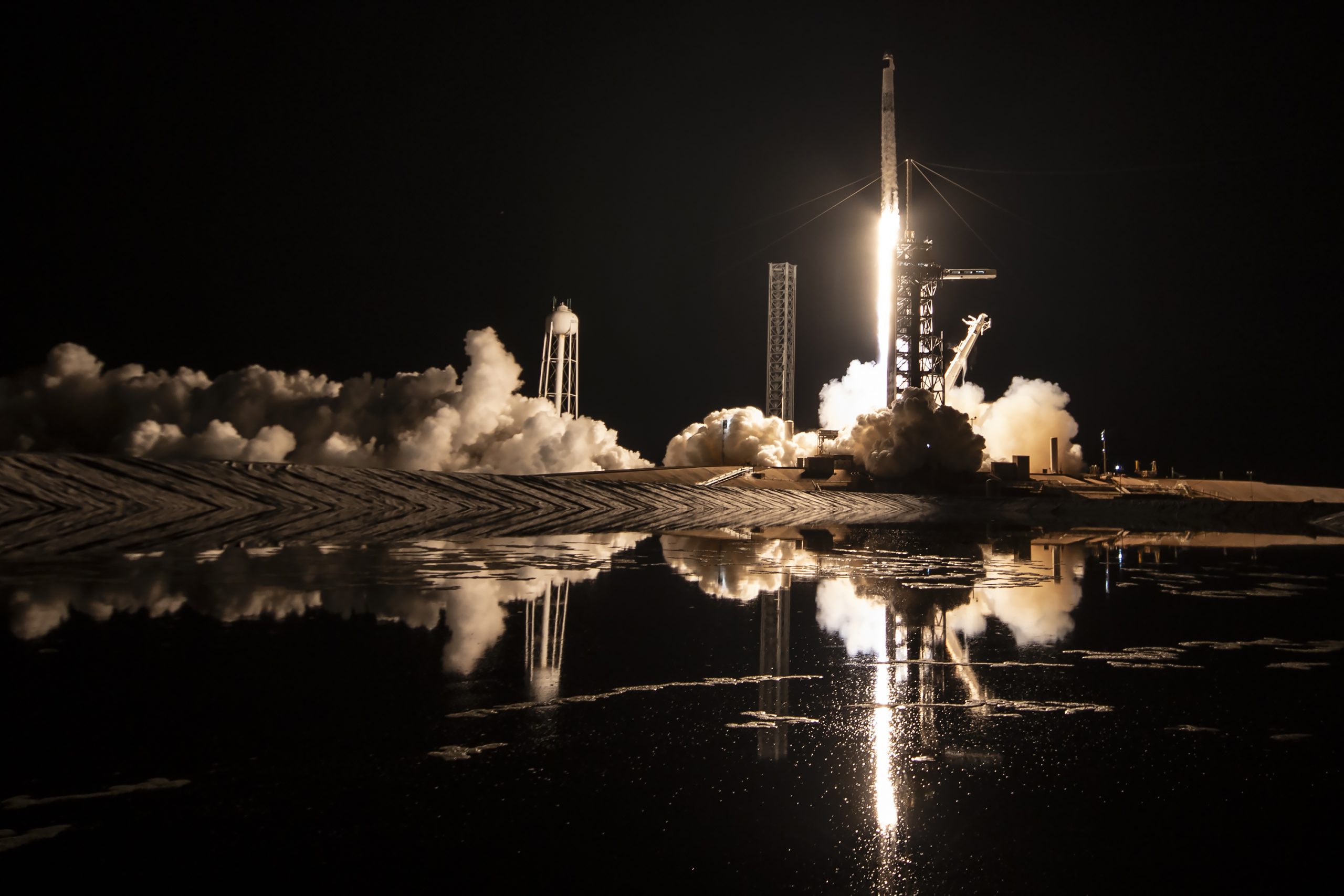
A new report this week suggests that Elon Musk-led rocket company SpaceX is considering an insider share sale that would value the company at $400 billion.
SpaceX is set to launch a primary fundraising round and sell a small number of new shares to investors, according to the report from Bloomberg, which cited people familiar with the matter who asked to remain anonymous due to the information not yet being public. Additionally, the company would sell shares from employees and early investors in a follow-up round, while the primary round would determine the price for the secondary round.
The valuation would represent the largest in history from a privately-owned company in the U.S., surpassing SpaceX’s previous record of $350 billion after a share buyback in December. Rivaling company valuations include ByteDance, the parent company of TikTok, as well as OpenAI.
Bloomberg went on to say that a SpaceX representative didn’t respond to a request for comment at the time of publishing. The publication also notes that the details of such a deal could still change, especially depending on interest from the insider sellers and share buyers.
Axiom’s Ax-4 astronauts arriving to the ISS! https://t.co/WQtTODaYfj
— TESLARATI (@Teslarati) June 26, 2025
READ MORE ON SPACEX: SpaceX to decommission Dragon spacecraft in response to Pres. Trump war of words with Elon Musk
SpaceX’s valuation comes from a few different key factors, especially including the continued expansion of the company’s Starlink satellite internet company. According to the report, Starlink accounts for over half of the company’s yearly revenue. Meanwhile, the company produced its 10 millionth Starlink kit last month.
The company also continues to develop its Starship reusable rocket program, despite the company experiencing an explosion of the rocket on the test stand in Texas last month.
The company has also launched payloads for a number of companies and government contracts. In recent weeks, SpaceX launched Axiom’s Ax-4 mission, sending four astronauts to the International Space Station (ISS) for a 14-day stay to work on around 60 scientific experiments. The mission was launched using the SpaceX Falcon 9 rocket and a new Crew Dragon capsule, while the research is expected to span a range of fields including biology, material and physical sciences, and demonstrations of specialized technology.
News
Tesla Giga Texas continues to pile up with Cybercab castings
Tesla sure is gathering a lot of Cybercab components around the Giga Texas complex.

Tesla may be extremely tight-lipped about the new affordable models that it was expected to start producing in the first half of the year, but the company sure is gathering a lot of Cybercab castings around the Giga Texas complex. This is, at least, as per recent images taken of the facility.
Cybercab castings galore
As per longtime drone operator Joe Tegtmeyer, who has been chronicling the developments around the Giga Texas complex for several years now, the electric vehicle maker seems to be gathering hundreds of Cybercab castings around the factory.
Based on observations from industry watchers, the drone operator appears to have captured images of about 180 front and 180 rear Cybercab castings in his recent photos.
Considering the number of castings that were spotted around Giga Texas, it would appear that Tesla may indeed be preparing for the vehicle’s start of trial production sometime later this year. Interestingly enough, large numbers of Cybercab castings have been spotted around the Giga Texas complex in the past few months.
Cybercab production
The Cybercab is expected to be Tesla’s first vehicle that will adopt the company’s “unboxed” process. As per Tesla’s previous update letters, volume production of the Cybercab should start in 2026. So far, prototypes of the Cybercab have been spotted testing around Giga Texas, and expectations are high that the vehicle’s initial trial production should start this year.
With the start of Tesla’s dedicated Robotaxi service around Austin, it might only be a matter of time before the Cybercab starts being tested on public roads as well. When this happens, it would be very difficult to deny the fact that Tesla really does have a safe, working autonomous driving system, and it has the perfect vehicle for it, too.
-

 Elon Musk1 week ago
Elon Musk1 week agoTesla investors will be shocked by Jim Cramer’s latest assessment
-

 News2 weeks ago
News2 weeks agoTesla Robotaxi’s biggest challenge seems to be this one thing
-

 Elon Musk1 day ago
Elon Musk1 day agoElon Musk confirms Grok 4 launch on July 9 with livestream event
-

 News2 weeks ago
News2 weeks agoWatch the first true Tesla Robotaxi intervention by safety monitor
-

 News5 days ago
News5 days agoTesla Model 3 ranks as the safest new car in Europe for 2025, per Euro NCAP tests
-

 Elon Musk2 weeks ago
Elon Musk2 weeks agoA Tesla just delivered itself to a customer autonomously, Elon Musk confirms
-

 Elon Musk2 weeks ago
Elon Musk2 weeks agoxAI welcomes Memphis pollution results, environmental groups push back
-

 Elon Musk2 weeks ago
Elon Musk2 weeks agoElon Musk confirms Tesla Optimus V3 already uses Grok voice AI

















